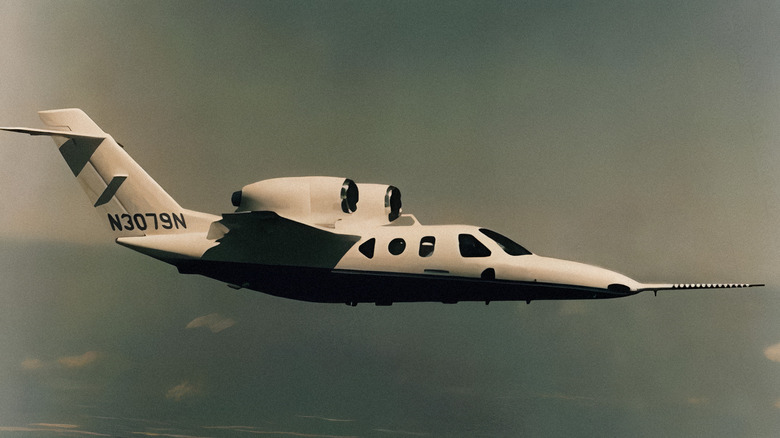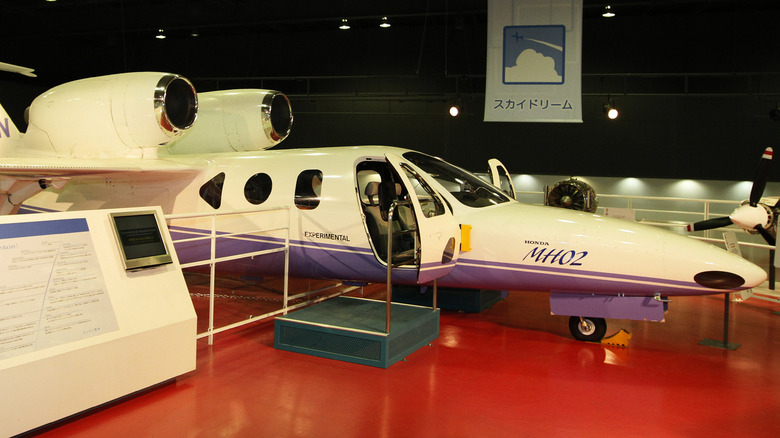The Experimental Honda Business Jet With A Strange Turbofan Design
With its over-the-wing engine mounts, the existing HondaJet — which has been around since 2015 — isn't the most conventionally-shaped private passenger jet around, but it isn't nearly as outlandish as Honda's previous aeronautical effort, the MH02.This experimental jet was produced by Honda with help from Mississippi State University and it first flew in 1993. The plane itself was a six-passenger private jet that flew without incident until 1996 when the tests ended; it clocked in 170 hours over its relatively short lifespan.
What separated the MH02 from just about every other jet in the air was its overall bizarre configuration. Just about every part of the plane, from its engine to its wings, is in a different place than you would find on standard private jets like a Gulfstream, Learjet, or Embraer. The engines, two Pratt and Whitney turbofans, are mounted on the top of the wings, making the MH02 look more like a seaplane than a high-class jet. The wings themselves are swept forward by 12 degrees according to Honda and mounted on top of the fuselage — this allowed the plane to handle remarkably well at low speeds.
Honda used a wacky but ingenious design
While most small aircraft are made out of a combination of aluminum and fiberglass, the MH02 was the first ever all-composite jet, meaning that all structural components of the jet were made out of a carbon fiber-epoxy resin material. The carbon fiber wonder was just under 37 feet long and had a wingspan of over 36 feet. Its two aforementioned turbofans pumped out a combined 2,464 pounds of thrust, allowing it to reach speeds of 353 knots (or 406 miles per hour).
Unconventional design notwithstanding, the MH02 never saw the light of day or real production aside from the prototype. Honda never intended the MH02 to take to the sky as a production jet and its sole purpose was to act as a test bed for Honda's flight-related projects. The MH02 wasn't going to win many prizes in the looks department, but the data collected during its flight proved to be invaluable to the future HondaJet. It showed that the company responsible for making the Honda Accord was capable of making a feasible passenger jet, further cementing Honda's reputation as the producer of just about anything that has an engine, turbofan or otherwise.
[Featured image by Morio via Wikimedia Commons | Cropped and scaled | CC BY-SA 3.0]

